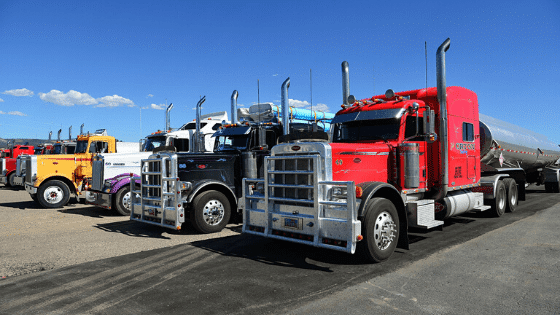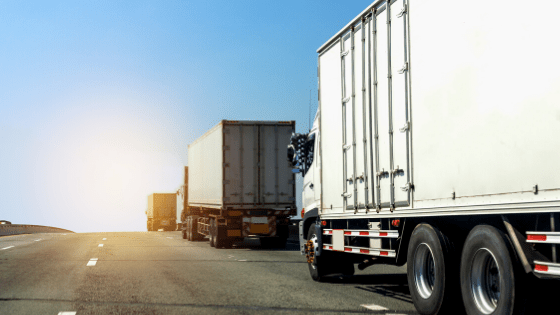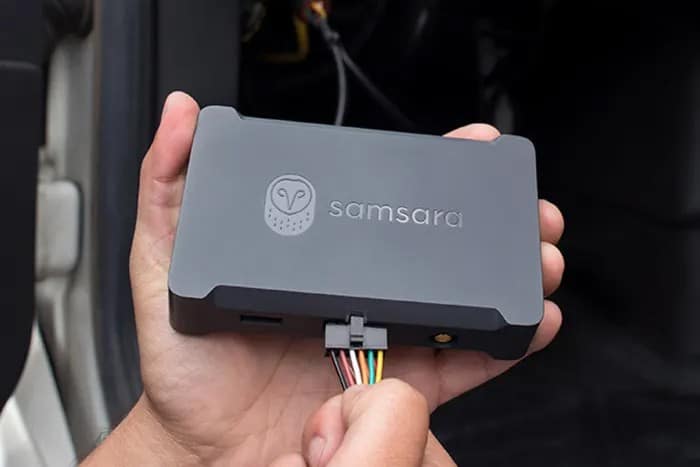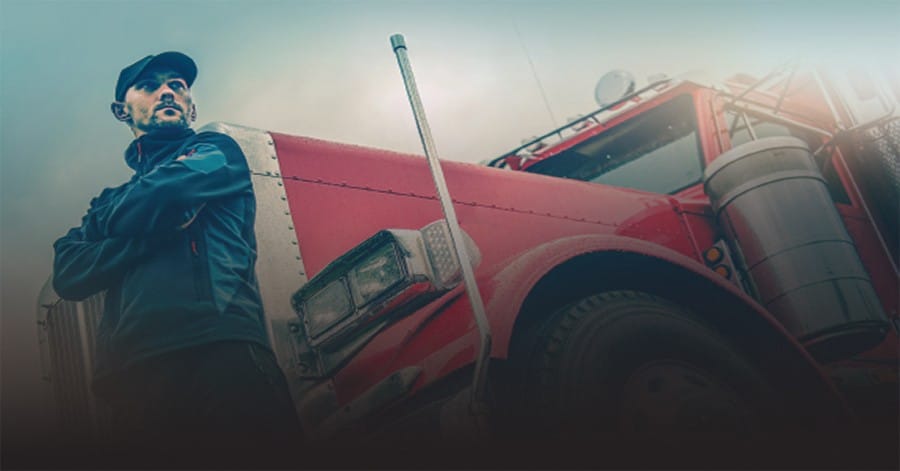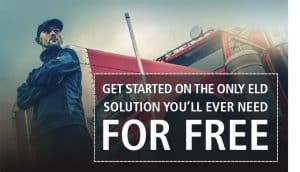With technology expanding continually and telematic solutions on the rise, fleets should consider taking advantage of the various resources available. When discussing telematics, asset trackers primarily come in mind. Having the ability to track various features of goods and vehicles give fleets tracking data that helps improve their management processes. There are several asset trackers available and knowing which is the optimal solution for a fleet is important to remain within budget and not waste resources.
Three Types of Asset Trackers
Before diving into the specific asset trackers available, it is important to understand the 3 main categories that they all fall under:
1. Cellular Asset Trackers are the more common asset trackers. They use cellular network coverage to transmit data and information about an asset.
2. Bluetooth Low Energy (BLE) Beacons succeed where cellular asset trackers face challenges. They can be used to transmit data in locations without cellular coverage.
3. Satellite Asset Trackers use satellites to transmit technology and are considered the most reliable option amongst the three for using outside cellular coverage.
What Solutions Industries Should Keep Their Eye Out For
Different industries prioritize different variables and equipping the right asset tracker can be difficult when there’s so many to choose from. It’s important to be aware of the several types of asset trackers that each industry will find most beneficial.
Cellular Asset Trackers
The Flex Solar – A Step Towards Free Energy
The Flex Solar is a solar powered asset tracker primarily utilized for the general tracking of bulk cargo containers, vehicles and other large assets with no direct power supply. Using solar energy is critical for large assets travelling far or being stored outside, like shipping containers, because they are often standalone assets with no power supply. With solar trackers, power can last up to 4 months, so fleets don’t need to worry about constant maintenance.
Transportation, Bussing, Construction, and Waste Management Fleets would find the flex solar most beneficial as they tend to be out in daylight for long periods of time. With no battery replacement, fleets won’t have to worry about adding it to their maintenance procedures, and it would be a great step towards renewable and free sources of energy.
The ZenRemora – A Simple Solution To Asset Tracking
If being dependent on solar energy is challenging, the ZenRemora 2 is a great alternative to the Flex Solar. It relies on an ion battery that would be quite reliable on trips where solar energy is scarce. Designed for general asset monitoring, it also has additional features including anti-theft mode, tamper detection, geo-fence awareness and expandability opportunities with BLE beacons.
The ZenRemora should be considered by most industries looking for a reliable and affordable solution to general asset monitoring. Long haul deliveries would find it most beneficial because they require several pings daily. Managing assets that travel far distances can be simpler for fleet managers by having their eyes on all their assets on one screen.
The ZenFalcon – Temperature Is Now A Known Variable
The ZenFalcon is a temperature-sensitive asset tracker which allows fleets to monitor temperature and humidity. With a 5 year battery life and hourly reporting, fleets can continually monitor temperature sensitive cargo. Similar to the Remora 2, the Falcon also has an anti-theft mode, tamper detection, and geo-fence aware included in its features.
Temperature monitoring can be a necessity in the Transportation and Courier/ Delivery industry, but it can be considered mandatory for the Food industry. There have been countless cases where food has spoiled due to improper temperatures, which results in inefficiency and waste of resources. The ZenFalcon can be utilized to monitor temperature and humidity levels of locations where food is stored to ensure optimal conditions are met.
The BlackBerry Radar – Prioritizing Load Management
The Bundle focuses on asset tracking for cargo, vehicles and non-motorized assets like bulk containers, trailers and various equipment where content capacity needs to be monitored. This allows fleets to better plan their loading processes and increase their efficiency.
It would be beneficial for several industries such as the Transportation, Food, Construction, and Courier/ Delivery, where fleets want to ensure the most use of their resources. As an example, it can be particularly useful for the Delivery/ Courier industry as they deal with receiving new delivery requests often. Specifically, it can allow for fleet vehicle load capacities to be known so dispatchers can view capacity levels and assign vehicles with low capacity to add more deliveries to their route to maximize productivity.
Sensoneo – Smart Waste Management For A Smarter City
Smart Sensors provide a Waste Management solution focusing on monitoring waste content quantity. This robust device can withstand harsh environmental conditions making it reliable in the long run. Once equipped into waste bins, it transmits data on bin capacity so waste management is aware of when bins are full and need to be emptied out. This reduces inefficient trips where barely filled bins are being emptied out, and emergency trips required because bins get overfilled and require immediate assistance.
For an in depth look at Smart Sensors and how they can prove to be effective, check out How A Waste Management Industry Can Implement Smart Sensor Technology.
BLE Asset Beacons
ZenBeacon – Asset Tracking Independent Of Cellular Coverage
The ZenBeacon provides data on light exposure, temperature, asset impact and provides an alternative to Radio Frequency Identity (RFID) tracking via BLE beacons. With a set of sensors, the status and conditions of fleet assets can be monitored, where the sensors can show temperature and light readings in one minute intervals.
Designed to have a long battery life, this would be resourceful when assets travel to locations with no cellular coverage. Specifically, long haul trips, which would include the Transportation industry.
The ZenGuppy – A Solution To Track Small Valuable Assets
The ZenGuppy is a compact, rugged Bluetooth tag solution for low-cost monitoring of assets. The ZenGuppy and the ZenRemora work great in coordination, where the Guppy can be utilized to track smaller assets within a larger asset, and the Remora can track the larger asset. With a 5 year battery life, and the ability to equip onto anything, the ZenGuppy provides the device serial number, manufacturer code, battery voltage, transmit power and temperature.
Since the ZenGuppy can equip onto anything and provide tracking information about the asset, all industries can take advantage of this solution to easily track any desired asset. It is particularly useful for low value or smaller assets where it may not make commercial sense to attach a more robust (and expensive) solution.
The Infsoft – An Indoor BLE Reader
Infsoft keeps track of assets and personnel within a building. Once an indoor map of each level of the building is uploaded to Infsoft, it can track where every single asset is at all times. This can be quite helpful in First Responder buildings. Knowing where each and every person is at all times will help raise efficiency which will result in safe cities and more lives saved.
Warehouses can take advantage of Infsoft to help their workforce as it will help them with tracking and monitoring all assets on the go between warehouse aisles and shelves with improved efficiency and productivity.
Satellite Asset Trackers
The SmartOne’sC – Reliability Outside Of Cellular Coverage
The SmartOneC is a self-charging solution to support long term remote deployments without the need to replace the battery. Using a highly efficient solar cell, it can continuously charge the battery and maximize operating life, even under extreme weather conditions.
It can be valuable for long haul deliveries and fleets working in rural areas like Agriculture Industries, as well as Rail Cargo. These fleets travel and work in locations with no cellular coverage, and therefore require a strong reliable connection, hence satellites being the viable option.
There are several telematic solutions available for fleets to take advantage of to improve their performance and management processes. Knowing which asset trackers benefit your fleet the most, is important to being within budget and spending your resources wisely. For a deeper look into what solutions will work best for your fleet, contact us for a custom solution.
